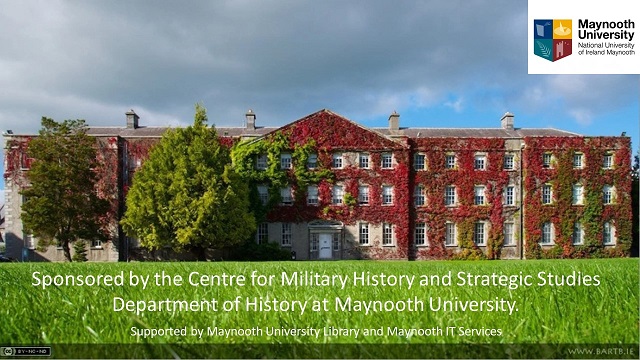Book Review: Tony Gaynor, 'Commanders of British Forces in Ireland, 1796-1922', Four Courts Press, 2022
Commanders of the British Forces in Ireland 1796-1922. By Tony Gaynor. Dublin: Four Courts Press, 2022. Pp 400; €60; ISBN 978-1-80151-037-0
Tony Gaynor has produced a much needed study of the commanders of the British Forces in Ireland, from the establishment of that role in the eighteenth century up to the foundation of the new Irish state. It is an ambitious project based on many years of research and he has adopted a comprehensive approach. Gaynor’s book could easily just have been a biographical listing of every commander of the British Forces in Ireland from 1796. Instead, he has examined the commanders as a means of illustrating the complexities of the role. There is discussion of all of the various appointment holders during this period, with the added context of discussion of Irish history and society between the years 1796 to 1922. This period saw seminal events in Irish history including the United Irishmen’s Rebellion in 1798, the rise of the Fenians, the 1916 Rising, and the War of Independence. The book also deals with Ireland’s response, as part of the United Kingdom, to international events such as the Napoleonic Wars, Crimean War, and the First World War. This is, therefore, an account that places the role of Commander of the British Forces in Ireland within the wider Irish context and does not just concentrate on purely military affairs.
As Gaynor states in the opening pages, his intention was not to detail the careers of each individual but to provide a brief overview of the commanders given in the context of the period. After describing some of the most important appointment holders and the command itself, Gaynor selected a series of ten thematic areas to explore the role of Commander of British Forces. These range from perhaps obscure topics such as society, culture and trade to the more obvious, war, rebellion, and revolution.
Gaynor’s book contains two central arguments: firstly, that the commander of the forces in Ireland was only as effective in supressing rebellion as the intelligence provided by Dublin Castle and secondly that the appointment was used as a scapegoat for intelligence failures of the civil administration as occurred in the Emmet Rebellion of 1803 and the Easter Rising in 1916.
While chapters such as war, rebellion, and revolution will be familiar to many students of Irish history, some of the most interesting chapters are those that contained new perspectives such as military training, religion and crime and punishment. The development of military training for the British army in Ireland was illuminating. From the small-scale manoeuvres of regiments on the 15 acres of the Phoenix Park, Gaynor traces the development to the large-scale complex manoeuvres prior to the First World War involving 20,000 soldiers across eight counties, which utilised air, artillery, and amphibious elements.
By bringing together within one volume an examination of the role of Commander of British Forces in Ireland and the men who occupied this important military, and indeed social, position in Ireland Gaynor provides a unique opportunity to understand the nexus between the individuals themselves, the office and the events occurring in Ireland at such pivotal moments in Irish history.
Gaynor also gives us an insight into the personalities of the various commanders, providing a contrasting perspective as to their public views on important areas. The less than favourable views of Irish-born commander Sir Garnet Wolseley of his fellow countrymen are contrasted with the more emphatic and insightful views of the Scottish-born commander Lieutenant General Sir Ralph Abercromby.
While the book is meticulously researched, exclusion of extraneous information such as the means by which the various commanders assumed their appointment in Ireland, may have allowed for more analysis and discussion of key points within the chapters. This would have also facilitated the inclusion of wider contextual information or presentation of alternate points of view. A further difficulty is the need to reference multiple commanders in a single chapter or indeed paragraph. Although necessitated by the thematic approach taken by the author, it can, at times, be confusing for the reader.
However, such comments do not detract from the completeness of the work and the research upon which it is based. Gaynor has accessed a broad range of sources, and this is clearly evidenced in the minutiae of the details provided in each chapter.
Overall, a detailed account of this important role in the administration of Ireland from 1796 up to the departure of Crown forces in 1922. The book provides a greater understanding of the men who held this appointment, their personalities, and their influence on the course of Irish political, military, and social history. The book will prove a valuable resource for any student of Irish history of the period.
James Deery,
PhD candidate and Hume Scholar
Department of History, Maynooth University

 This work is licensed under a
This work is licensed under a 
